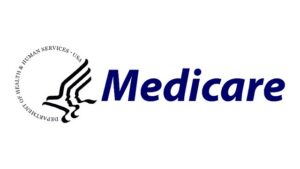Why You Need a Las Vegas Personal Injury Lawyer After an Accident
After an accident in Las Vegas, you might think handling your case alone is manageable, but the complexities of personal Injury law can quickly overwhelm you. Without a skilled personal injury lawyer, you risk undervaluing your claim or missing essential deadlines that protect your rights. These professionals know how to establish negligence and negotiate effectively with insurance companies, ensuring you receive the compensation you deserve. But what happens when you underestimate the intricacies of the claims process? Understanding the stakes is important, and there’s more to reflect on than you might realize.

Understanding Personal Injury Law
Understanding personal injury law is vital for anyone involved in an accident, as it empowers you to navigate the complexities of legal claims and seek the compensation you deserve. Personal injury law primarily revolves around the concept of negligence, where one party’s failure to exercise reasonable care results in harm to another.
Knowing how negligence is established can greatly impact your case. You’ll need to demonstrate that the other party owed you a duty of care, breached that duty, and caused your injuries.
You should also familiarize yourself with the types of damages you can claim, which often include medical expenses, lost wages, and emotional distress. This knowledge can help you articulate your needs when discussing your case with insurers or in court.
Additionally, understanding the statute of limitations is essential, as it sets a deadline for filing your claim. Missing this window can forfeit your right to seek compensation.
Benefits of Hiring a Lawyer
Hiring a personal injury lawyer can greatly bolster your chances of securing fair compensation after an accident. When you’re faced with medical bills, lost wages, and emotional distress, having a knowledgeable advocate by your side can make all the difference. A skilled lawyer understands the nuances of personal injury law and knows how to navigate the complexities of your case, ensuring that you don’t miss out on any potential compensation.
Moreover, a lawyer can effectively communicate with insurance companies on your behalf. They’re experienced negotiators who’ll work to maximize your settlement, preventing you from being shortchanged by lowball offers. With their expertise, you gain valuable insight into the true value of your claim.
Additionally, hiring a lawyer allows you to focus on your recovery instead of getting caught up in legal proceedings. They handle the paperwork, gather evidence, and prepare your case for trial if necessary, so you can concentrate on healing.
Ultimately, enlisting a personal injury lawyer not only levels the playing field but also provides you with a sense of security as you pursue the justice and compensation you deserve. Don’t navigate this challenging process alone; let a professional guide you.
The Claims Process Simplified
Steering through the claims process after an accident can feel overwhelming, but breaking it down into manageable steps makes it much simpler and helps you regain control over your situation.
First, gather all documentation related to your accident, including medical records, police reports, and photographs. This information is essential for building a strong case.
Next, assess your damages—consider medical expenses, lost wages, and emotional distress.
Once you have your documentation and damages sorted, it’s time to file your claim. This is where a Las Vegas personal injury lawyer becomes invaluable. They’ll guarantee you meet all deadlines and follow the correct procedures, preventing costly mistakes.
After filing, you may enter negotiations with the insurance company. Here, having an experienced lawyer can greatly improve your chances of receiving a fair settlement. They’ll advocate for your best interests, pushing back against lowball offers.
The Importance of Legal Representation
After an accident, hiring a Las Vegas personal injury lawyer is essential to ensure your rights are protected and that you receive the compensation you deserve. An experienced lawyer can navigate the complexities of your case, negotiate with insurance companies, and provide invaluable support throughout the legal process. For a more detailed discussion on the importance of legal representation after an accident, we invite you to read our detailed article at Personal Injury Lawyer Las Vegas. This resource will help you understand the significant benefits and guide you in making an informed decision.

